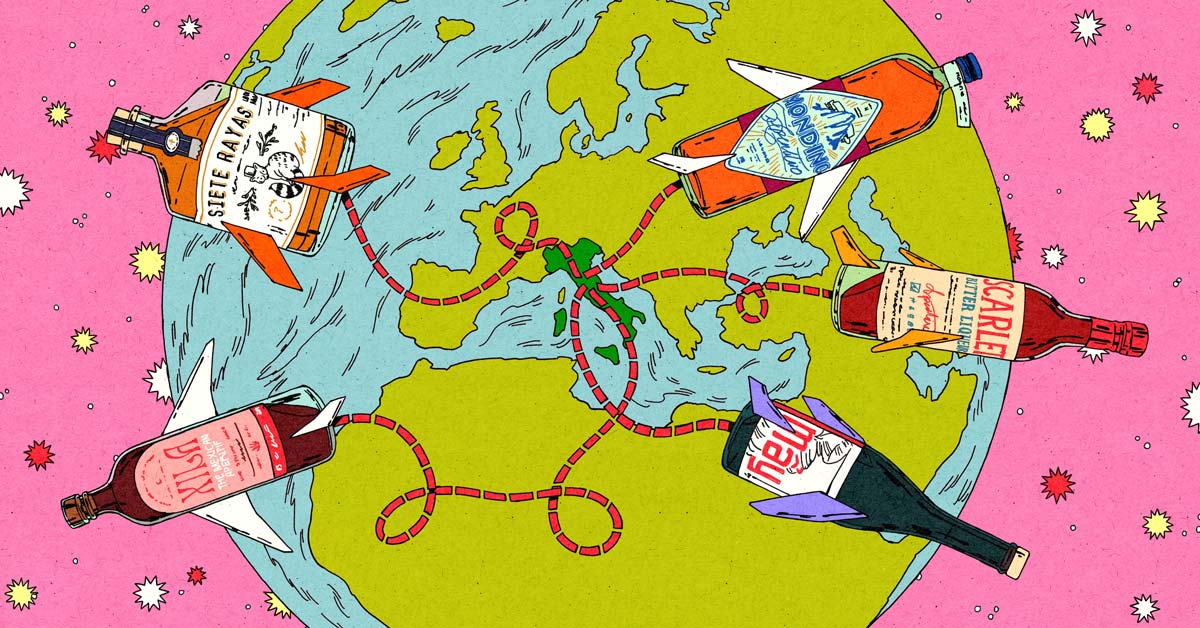Look at any drinks menu today and you’ll likely see classic Italian amari standing side by side with similarly bittersweet and fortifying after-dinner offerings from countries as far afield as Mexico, Japan and Vietnam. Despite the agita this might cause some Italian producers, this new wave of global amaro-inspired liqueurs is only growing.
Italy is known for its strict Controlled Designation of Origin (DOC) classifications protecting the quality of many of the country’s renowned wines and foodways—from Vermouth di Torino and Vin Santo to Prosciutto di Parma and Parmigiano. Yet, no such classification exists for amaro.
Aaron Sing Fox and Daniel de la Nuez, the founders of Brooklyn’s Forthave Spirits, point out that it would be difficult for legacy producers to find common ground around which ingredients or base spirit should be required to be classified in this way. “Amaro is primarily a blend of a diverse range of agricultural ingredients, many of which are sourced far from the region where the final product is made,” explains Fox. For Seattle bartender, writer and illustrator Andrew Bohrer, this is a good thing. “I think it’s a pernicious habit to tie drink categories to countries rather than cultures,” he says. “Countries are a newer concept; they change, they may cease to exist… whereas most cultures are more resilient.”
Though Italy has historically been the home of the largest variety of herbal bitter liqueurs, the tradition has crossed borders for centuries. Today, more than ever, the proverbial bittersweet cat is out of the bag: U.S.-made amaro is booming and more countries—many without a traditional aperitif or digestif culture—are crafting modern takes on the category, inspired by their own culture, traditions and ingredients.
For Forthave’s de la Nuez, it bears resemblance to the way hip-hop artists sample from existing music and spin it into something wholly unique. “Hip-hop was created in the Bronx, but the genre transcends borders and flavors, much like amaro does now,” says de la Nuez. “It’s like taking a snippet of a soul song, flipping it and speeding it up, dropping a beat over it and creating a new song from it. These interpolations have created such unique and beautiful works.”











